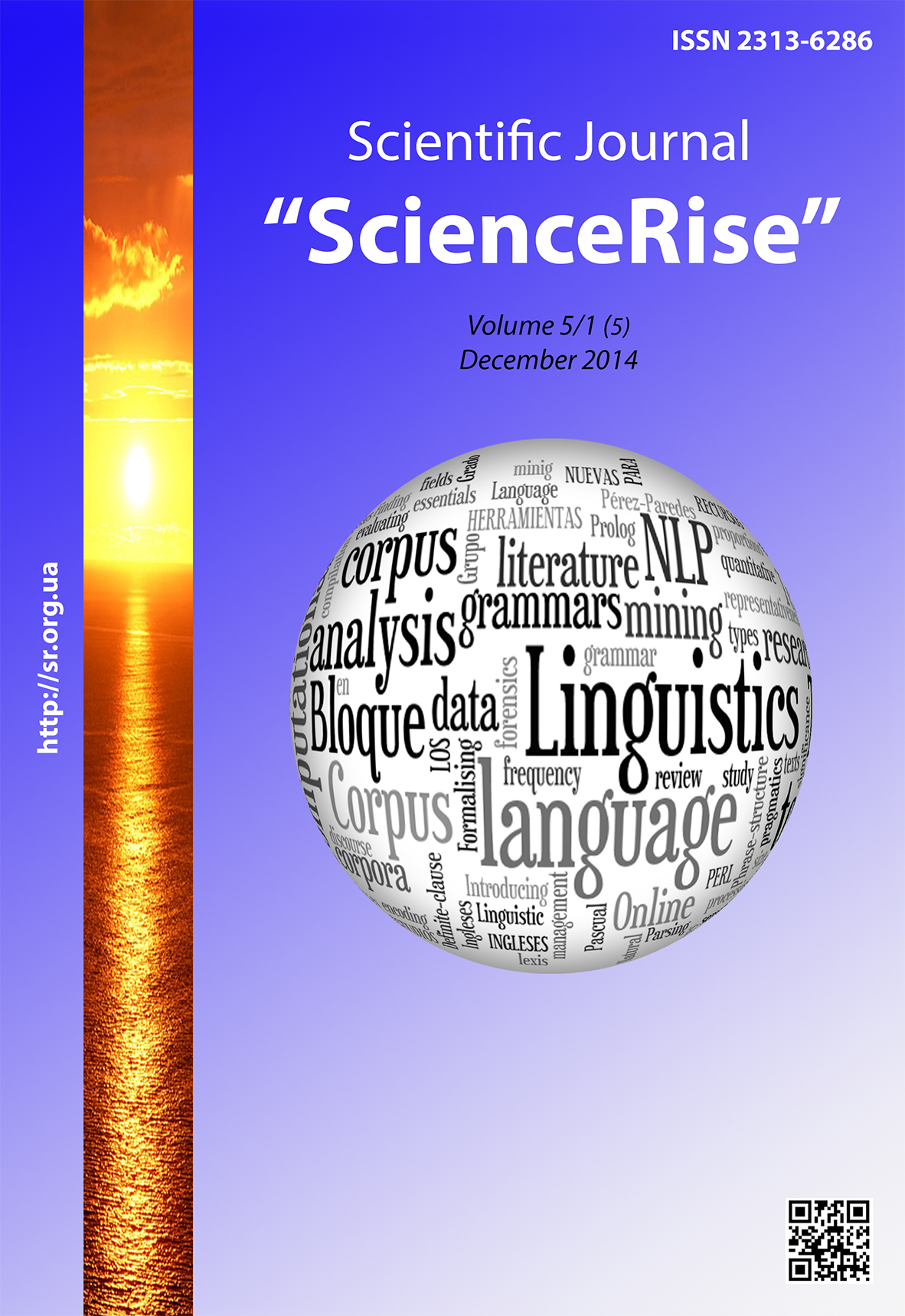Structural and semantic principles of text organization in the official business style (on example of statements of claim)
DOI:
https://doi.org/10.15587/2313-8416.2014.32248Keywords:
text, official business text, claim, statement of claim, textual information, structural and semantic principles of text-buildingAbstract
The article is devoted to the structural and semantic organization of texts of the official business style, in particular statements of claim. The main principles of text-building of a statement of claim are analyzed and its necessary parts are determined; types of textual information according to denotative, genre and tonally, evocative and etiquette style functions are characterized; the requirements for composing the text of a statement of claim are defined. The character of indentation from genre canons in composing statements of claim is defined.
References
Horbachuk, D. V. (1997). Structural and semantic types of proof word-combinations of words are in officially-business texts of modern Ukrainian (functionally-stylistic analysis) [Strukturno-semantychni typy stiykykh slovospoluchen' sliv v ofitsiyno-dilovykh tekstakh suchasnoyi ukrayins'koyi movy (funktsional'no-stylistychnyy analiz)]. Institute Ukrainian Language, National Academy of Sciences. Kiev, 23.
Matsko, O. M. (2001). Language formulas are in diplomatic texts of modern Ukrainian (functionally-stylistic analysis) [Movnі formula y diplomatic texts suchasnoї Ukrainian Language (funktsіonalno-stilіstichny analіz]. Institute Ukrainian Language, National Academy of Sciences. Kiev, 21.
Pazynych, O. M. (2001). Functionally-structural features of texts of diplomatic correspondence [Funktsional'no-strukturni osoblyvosti tekstiv dyplomatychnoho lystuvannya]. Institute of Linguistics them. A. A. Potebnya. Kiev, 20.
Hlushchyk, S. V., Dyyak, O. V, Shevchuk, S. V. (2006). Modern business documents [Suchasni dilovi papery]. А. С. К., 398.
Shevchuk, S. V. (2004). Business broadcasting for civil servants [Dilove movlennya dlya derzhavnykh sluzhbovtsiv]. Litera LTD, 395.
Shemshuchenko, Yu. S. (2003). Yurydychna entsyklopediya [Legal encyclopedia]: in 6 volumes : volume 4. M-P. Ukrainian encyclopedia named after M. P. Bazhan, 736.
Tsyvil'nyy protsesual'nyy kodeks Ukrayiny [Civil and procedural code of Ukraine] (2004). Available at : http://kodeksy.com.ua/tsivil_nij_protsesual_nij_kodeks_ukraini/statja-119.htm (Last accessed: 20.11.2004)
Shemshuchenko, Yu. S. (2003). Yurydychna entsyklopediya [Legal encyclopedia]: in 6 volumes : volume 5. M-P. Ukrainian encyclopedia named after M. P. Bazhan, 736.
Shvartskopf, B. S. (1998). Kul'tura delovoy rechy [Culture of business speech] // Culture of Russian speech : textbook for institutes of higher education. Moscow, USSR, 216–237.
Tatarnikova, N. M. (2002). Yurydycheskyy protokol kak vtorychnыy rechevoy zhanr [Judicial protocol as a secondary speech genre] // Forensic linguistics-3 : Problems of forensic linguistics expertise, 188–203.
Shvartskopf, B. S. (1998). Kul'tura delovoy rechy [Culture of business speech]. Culture of Russian speech : textbook for institutes of higher education. Moscow, USSR, 216–237.
Bazhenova, Ye. A., Kotiurova, M. P. (2003). Smыslovaya struktura (smыsl) teksta [Notional structure of the text]. Stylistic encyclopaedic dictionary. Moscow, USSR: Flinta : Science, 57–67.
Tatarnikova, N. M. (2002). Yurydycheskyy protokol kak vtorychnыy rechevoy zhanr [Judicial protocol as a secondary speech genre]. Forensic linguistics-3 : Problems of forensic linguistics expertise, 188–203.
Matvieieva, T. V. (2003). Tonal'nost' [Tonality]. Stylistic encyclopaedic dictionary. Moscow, USSR: Flinta : Science, 77–84.
Downloads
Published
Issue
Section
License
Copyright (c) 2014 Надія Йосипівна Коцюба

This work is licensed under a Creative Commons Attribution 4.0 International License.
Our journal abides by the Creative Commons CC BY copyright rights and permissions for open access journals.
Authors, who are published in this journal, agree to the following conditions:
1. The authors reserve the right to authorship of the work and pass the first publication right of this work to the journal under the terms of a Creative Commons CC BY, which allows others to freely distribute the published research with the obligatory reference to the authors of the original work and the first publication of the work in this journal.
2. The authors have the right to conclude separate supplement agreements that relate to non-exclusive work distribution in the form in which it has been published by the journal (for example, to upload the work to the online storage of the journal or publish it as part of a monograph), provided that the reference to the first publication of the work in this journal is included.

